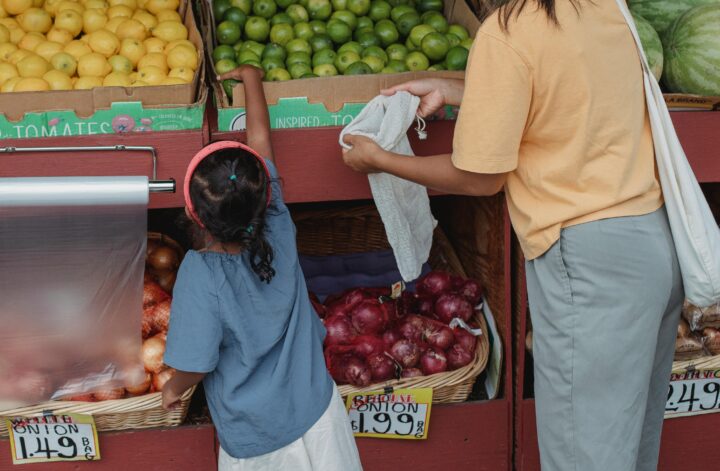As parents, we strive to provide the best for our children while nurturing values that will shape their future. In today’s consumer-driven world, raising eco-conscious kids is more important than ever. Green parenting involves teaching children to respect and care for the environment, make sustainable choices, and understand their impact on the planet. By instilling these principles from a young age, parents can empower their children to become responsible global citizens who prioritize environmental stewardship. In this comprehensive guide to green parenting, we’ll explore practical tips, strategies, and activities to help you raise eco-conscious kids in a consumer society.
Understanding Green Parenting
Green parenting is about integrating sustainable practices and values into everyday family life. It encompasses teaching children about environmental conservation, reducing waste, consuming mindfully, and fostering a deep connection with nature. By modeling eco-friendly behaviors and engaging children in meaningful activities, parents can inspire a lifelong commitment to sustainability.
1. Teach Environmental Awareness
Start by educating your children about environmental issues and the importance of conservation. Use age-appropriate books, documentaries, and discussions to introduce topics such as climate change, pollution, biodiversity, and resource depletion. Encourage curiosity and critical thinking about how human actions impact the natural world.
2. Lead by Example
Children learn best by observing their parents’ actions and attitudes. Model eco-friendly behaviors such as recycling, conserving energy and water, reducing single-use plastics, and opting for sustainable products. Involve children in household routines like composting, gardening, and meal planning to demonstrate practical ways to live sustainably.
3. Explore Nature Together
Spending time outdoors is essential for fostering a love and appreciation for nature. Take family hikes, visit parks, beaches, and nature reserves, and explore local wildlife habitats. Engage children in activities like birdwatching, plant identification, and nature scavenger hunts to cultivate a deeper connection with the natural world.
4. Practice Sustainable Living at Home
Integrate sustainable practices into your daily routines and household activities. Involve children in:
Energy Conservation: Turn off lights and electronics when not in use, use energy-efficient appliances, and adjust thermostat settings responsibly. You can also educate them on where household energy comes from (by the way, if you’re considering switching to a more eco-friendly provider, check out CleanChoice Energy reviews).
Water Conservation: Teach children to take shorter showers, fix leaks promptly, and use water-saving fixtures.
Waste Reduction: Reduce, reuse, and recycle materials. Encourage children to donate toys and clothing they no longer use and participate in community recycling programs.
5. Choose Eco-Friendly Products
Select environmentally friendly products for your home, including organic and natural cleaners, biodegradable personal care items, and eco-conscious toys and clothing. Look for certifications such as USDA Organic, Fair Trade, Forest Stewardship Council (FSC), and Green Seal to ensure products meet rigorous environmental and ethical standards.
6. Support Sustainable Food Choices
Teach children the importance of sustainable food practices, including:
Eating Locally and Seasonally: Purchase fruits, vegetables, and other foods from local farmers’ markets or community-supported agriculture (CSA) programs.
Reducing Meat Consumption: Incorporate more plant-based meals into your family’s diet to reduce the environmental impact of animal agriculture.
Growing Food: Start a family garden or grow herbs and vegetables in containers to teach children about food production and the benefits of homegrown produce.
7. Reduce Screen Time and Encourage Outdoor Play
Limit children’s screen time and encourage outdoor play and imaginative activities. Outdoor play not only promotes physical health but also fosters creativity, imagination, and a deeper connection with nature. Provide opportunities for unstructured play in natural settings where children can explore, discover, and appreciate the environment.
8. Engage in Environmental Advocacy and Volunteering
Involve children in community clean-up efforts, tree planting initiatives, and environmental advocacy campaigns. Participate in beach clean-ups, park restoration projects, or neighborhood recycling drives to show children how their actions can make a positive impact on the environment and inspire change in their community.
9. Educate About Consumerism and Conscious Consumption
Discuss the concept of consumerism with children and help them understand the environmental and social implications of overconsumption. Teach them to value experiences and meaningful connections over material possessions. Encourage thoughtful decision-making when purchasing items and prioritize quality, durability, and ethical production practices.
10. Foster a Culture of Environmental Responsibility
Create a supportive environment where children feel empowered to take action and make a difference. Celebrate their efforts in adopting green habits, making sustainable choices, and advocating for environmental causes. Encourage open dialogue about environmental issues and inspire children to think critically, ask questions, and seek solutions to global challenges.
Conclusion
Green parenting is a journey of learning, exploration, and commitment to shaping a sustainable future for our children and generations to come. By nurturing eco-conscious values, modeling sustainable behaviors, and engaging in meaningful activities, parents play a pivotal role in inspiring children to become stewards of the environment. Together, we can empower the next generation to embrace a lifestyle that respects and preserves our planet’s natural resources and biodiversity. Let’s raise eco-conscious kids who are equipped to make positive contributions to a healthier and more sustainable world.




